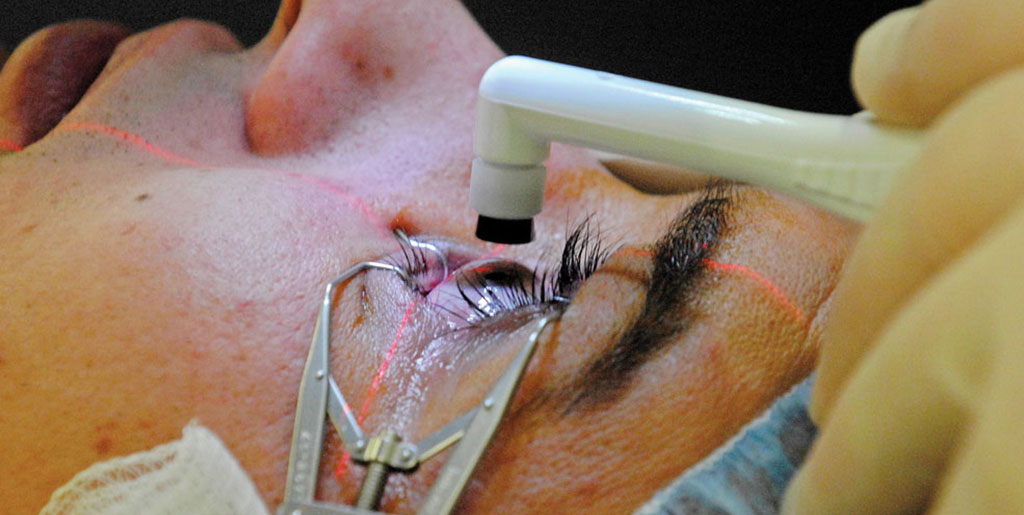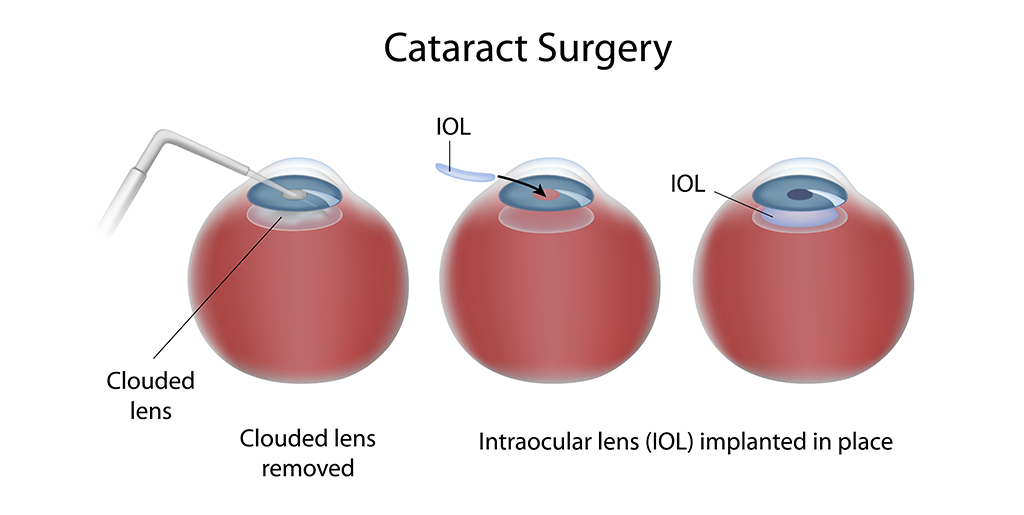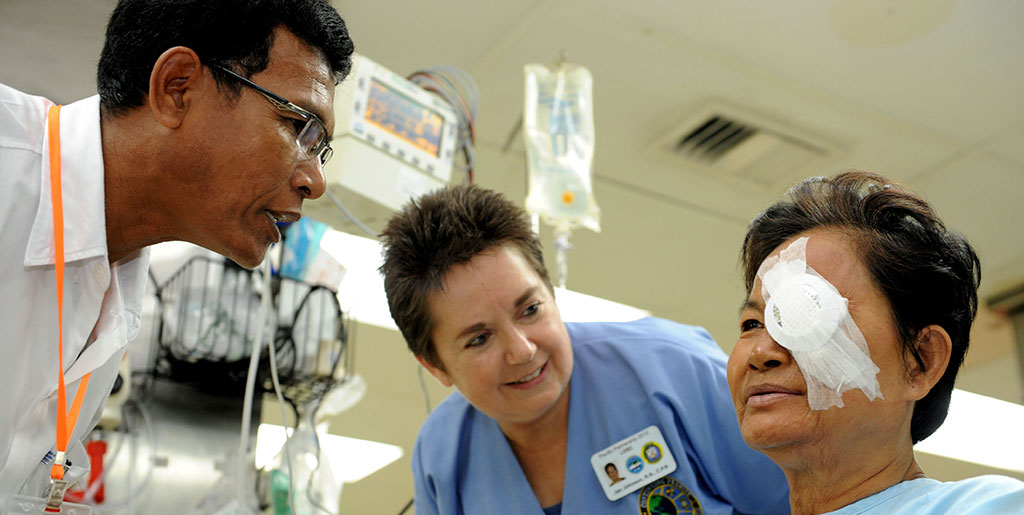People in the United States of America are surely enjoying the rewards of advances in the healthcare industry, the average life expectancy soaring higher than ever through any other time span in history, i.e. 81.2 years for females and 76.4 years for males.
According to The Centers for Disease Control and Prevention life expectancy in the United States was reported to be 78.7 years.

However, Cataracts have affected more than 24.4 million Americans age 40 and older. By age 75, approximately half of all Americans have cataracts as per the American Academy of Ophthalmology. Though age-related cataracts can begin to affect your vision in your 40s, they usually don’t show up until after the 60s.
Somehow, many people, after being inflicted by cataracts, end up believing they can’t do much about it, which is totally wrong. Remember, “It’s never too late to prevent your vision from further harm” and “prevention is better than cure” holds up truer than even ever coping with cataracts.
So, let’s continue with your cataract prevention journey by knowing more about it and learning some really efficient tips to prevent cataracts naturally, as long as possible.
What is Cataract?
Cataract is the leading cause of blindness and vision loss in the United States as reported by The Centers for Disease Control and Prevention, with cataract cases outnumbering other age-related eye diseases like macular degeneration, glaucoma, and diabetic retinopathy collectively, every single year.
According to the Centers for Disease Control and Prevention:
An estimated 20.5 million (17.2%) Americans 40 years and older have Cataracts in on or both eyes, and the total number of people who have Cataracts is estimated to increase to 30.1 million by 2020 in the U.S.
There is a natural lens inside the eye, sitting behind the iris (the colored area centered in the pupil of the eye) and cataracts involve changes in clarity of that lens, which ultimately deteriorates the visual acuity of a person.
In fact, the natural lens is not visible to the naked eye, becoming visible only after getting extremely cloudy.
This lens is primarily used to focus light unhindered on the retina located at the back of the eye, where it is transformed into neurological signals interpreted by the brain as vision. Significant cataracts end up blocking and distorting the light passing through this lens, resulting in visual impairments and complaints.
Tips to Prevent Cataracts Naturally
The best way to prevent cataracts naturally, without surgery, is to implement positive lifestyle changes, such as:
1: Eat Right
Food plays a vital role in helping you achieve optimal eye health. Tuning your dietary habits can go a long way in ensuring your eyes remain healthy and functional for as long as possible.
Start off by introducing antioxidant and glutathione rich foods in your diet plan. Greens like broccoli, asparagus, spinach and Brussels sprouts are considered to be really eye-friendly foods. Similarly, avocados, grapefruit, and strawberries, rich in glutathione, help keep your eyes healthy.
If you don’t feel much comfortable with the idea of consuming much of raw fruits and veggies, you can also use them as nicely blended juices and smoothies.
Foods containing lutein and zeaxanthin are also known to be significant for eye health because they contain carotenoids, also found in the lens of your eyes. These include eggs, collard greens, turnip greens, and corn, offering protection not only against cataracts but macular degeneration as well.
It’s not only about what to include in your diet that works for the protection of your eyes and vision, but also what you exclude from your diet. So, make sure to stay away from the likes of white sugar and its processed substitutes like high-fructose corn syrup (actually produced from genetically modified corn). Such sugar rich foods are known to stimulate cataract growth.
2: Hydrate Appropriately
Perhaps, hydration remains one of the most underrated factors that can have an impact on progression of cataracts in a person. That’s why health professionals recommend appropriate hydration and failure in doing so can result in accumulation of harmful body toxins capable of inflicting health issues in general, and eye health issues in particular, cataracts being one of them. Ample water intake helps our body flush out harmful toxins with much ease. So, you better develop the habit of drinking water frequently at regular intervals.
3: Cut Back on Alcohol
You can hang on to that glass of wine while dining at night, but It has been found that alcohol consumption slightly increases the risk of Cataracts such as in Harvard Health Publishing.
Swedish researchers found that women who had one or more alcoholic drinks per day were about 11% more likely than non-drinkers to need cataract surgery. However, exceeding the 20 grams limit can also result in raising those odds.
4: Avoid Smoking
Almost everyone knows of the harmful effects of smoking on the heart and lungs, but ironically, the majority of people fail to comprehend the risks smoking brings to the eyes, including cataracts.
More free radicals are created within your eyes when you smoke. These are the harmful chemicals released due to different processes taking place in the body and when you smoke, more free radicals are produced in your eyes.
On the other hand, antioxidants are the good chemicals dedicated to fighting off bad chemicals in your body and you can get them through fruits and vegetables.
When you smoke excessively, good chemicals in your body are consumed profoundly, encouraging the production of harmful toxins that can also cause cataracts.
So, when you quit smoking, you are improving your chances of preventing cataracts from affecting your eyes.
5: Use Shades
Apart from the fact that it makes you look like a rockstar, but will also help you lower the risk of getting cataracts. Researchers are now certain about the UV light’s potential to harm your eyes, damaging the proteins found within the lens of your eyes.
So, whichever brand you want to pick up for your next pair of sunglasses, make sure to pick the one offering 99% – 100% protection against UVA and UVB rays, in addition to other features you desire to have in those.
6: Keep Track of Your Blood Sugar Levels
Sure, you must be aware of keeping your blood sugar levels under control if you suffer from diabetes, but did you know it can also help you prevent cataracts? Research reveals that your likelihood of getting cataracts is higher if you have diabetes as compared to those who are diabetes free.
People, whose blood sugar levels remain too high for too long, can have their eye lenses swollen. Moreover, eye lenses also convert blood sugar into sorbitol and if it’s over accumulated, your quality of vision starts deteriorating and chances of cataract formation arise.
7: Get Regular Eye Exams
The significance of a comprehensive eye exam can never be overstated, particularly if you are aged between 40 and 64, repeating the exam every 2 to 4 years, ideally. In case you are aged 65 and above, get the exam every 1 to 2 years.
Moreover, your eye doctor can advise you on one of the low vision aids that can improve your quality of vision significantly, helping you perform many of your daily activities all over again by yourself.






